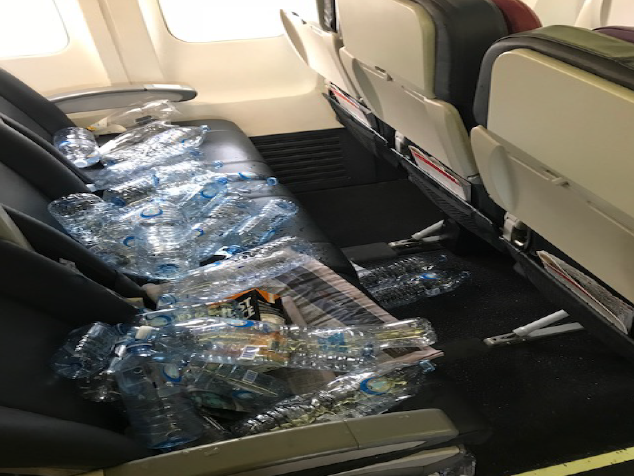| Occurrence Briefs are concise reports that detail the facts surrounding a transport safety occurrence, as received in the initial notification and any follow-up enquiries. They provide an opportunity to share safety messages in the absence of an investigation. |
What happened
On 5 March 2018, as boarding for a domestic flight from Melbourne to Sydney was nearing completion, a passenger noticed his mobile phone was smoking and emitting popping and crackling sounds.
The mobile phone was dropped on the cabin floor in front of seat 23C and the cabin crew were alerted. Those passengers already aboard were directed to leave any personal items behind, move towards the front of the aircraft and exit through the forward door. The flight crew were advised, and they requested that the Aviation Rescue and Fire Fighting Service (ARFFS) attend.
Cabin crew poured bottled water sourced from passengers and the galley onto the mobile phone and by the time the ARFFS arrived through the aircraft’s rear door the device (shown in Figure 1) had ceased smoking.
After the burned mobile phone had been removed from the aircraft by the ARFFS the operator’s engineering services employees cleaned up the spilled water and conducted an inspection for any damage. Passengers were subsequently allowed to return to the cabin to retrieve their belongings and the operator arranged for another aircraft to work the scheduled service.
Figure 1: Damaged mobile phone after removal from aircraft by ARFFS

Source: ARFFS
Safety message
This incident is a dramatic reminder of the hazards of transporting personal electronic devices powered by lithium or lithium-ion batteries, and a demonstration of the importance of including mobile phones, laptop computers, power banks, wireless headphones, watches and cameras in carry-on baggage, rather than checked baggage.
If the overheating device had been included in the passenger’s checked baggage and placed in the aircraft’s cargo hold it may have presented a much greater hazard. A significant quantity of water was required to contain the thermal runaway event that developed as the mobile phone short circuited and overheated and Figure 2 shows the water bottles emptied onto the device by the cabin crew.
While the risk of these devices catching fire and exploding in-flight is low, airlines and flight crews have well-established procedures and methods to contain battery fires in-flight. The Civil Aviation Safety Authority web page Travelling safely with batteries and portable power packs provides information on the safe transport of devices with lithium or lithium-ion batteries on aircraft.
Figure 2: Water bottles emptied to cool and extinguish mobile phone

Source: ARFFS
Other ATSB news stories and investigations about lithium or lithium-ion batteries are available:
- Personal electronic device fire in-flight involving Boeing 747, VH-OJS, 500 km WNW of John F. Kennedy International Airport, United States, on 21 June 2016
- Crew’s prompt in-flight response to smoking device.
About this report
Decisions regarding whether to conduct an investigation, and the scope of an investigation, are based on many factors, including the level of safety benefit likely to be obtained from an investigation. For this occurrence, no investigation has been conducted and the ATSB did not verify the accuracy of the information. A brief description has been written using information supplied in the notification and any follow-up information in order to produce a short summary report, and allow for greater industry awareness of potential safety issues and possible safety actions.


